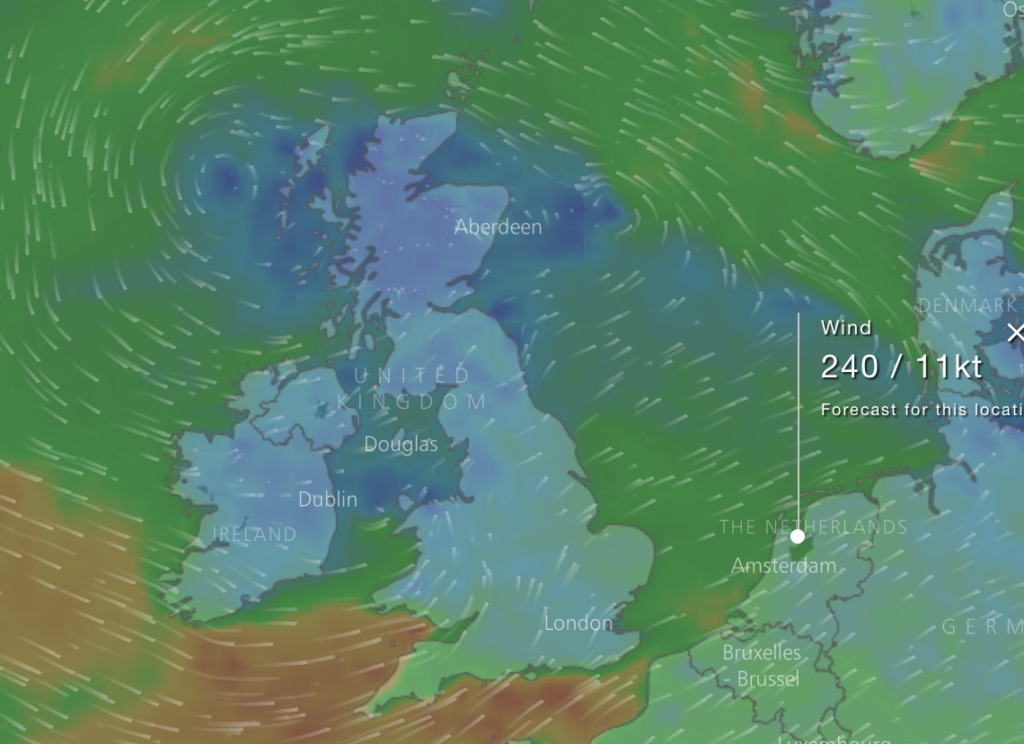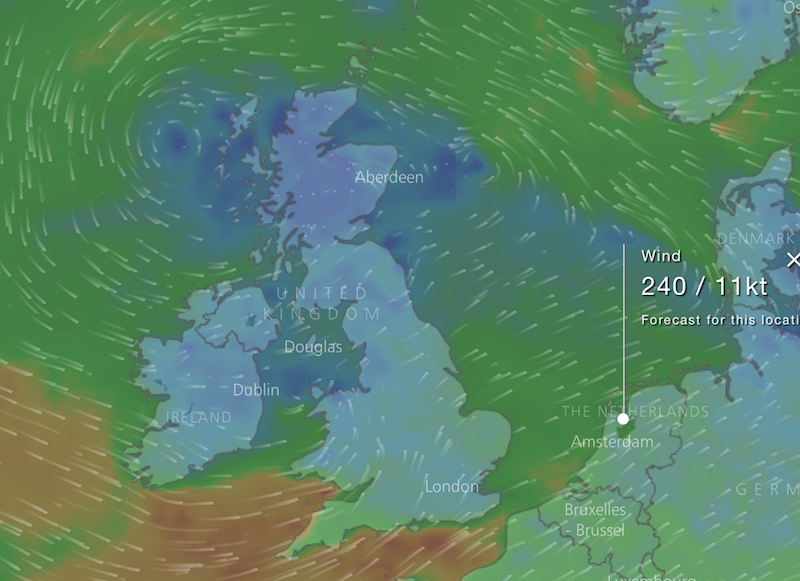The 2017 Laser Radial Worlds was sailed Medemblik this past month. It’s a really great venue close enough to the Schipol airport in Amsterdam and very accessible to sailors from all over. The popular Dutch summer vacation spot, Medemblik, offers plenty of options for accommodations. There are several large bungalow parks that get packed with sailors during the summer. In two weeks the venue hosted over 600 radial world sailors, which is an impressive feat. The women’s Olympic class was the last to compete with 100 of the best sailors. My team of Brenda Bowskill and Sarah Douglas from Canada finished 5th and 12th, their best result yet. Another shoutout to Sail Canada team member Isabella Bertold for finishing 19th.
We spent over 30 days there this year getting to know the venue of laser radial worlds. It’s one of the trickiest places I’ve ever sailed and coached because picking apart the shifts requires you to have an open mind to many variables. The most common direction is off land directly from the club. I would say 80% of our training was between 210 and 260 TWD often with a mixture of sunny skies and isolated rain cells.

A common low pressure system sits over northern England for several days providing strong westerly winds across most of southern England and oftentimes accelerated through the English Channel and straight over the flat lands of the Netherlands into the IJsselmeer.
One of these systems faded the day before the regatta, leaving us with a light cross-shore gradient from the direction of 105 degrees.
The orange circle shows the course area. In only 7 knots of wind, the furthest right shift was from 110 and didn’t provide much pressure. It looked like the wind was trying to carry over the land and also bend around the corner. The adverse angle created by the land effect was preventing the bigger left-angled pressure from entering the bay entirely. Essentially the further left you sailed the more pressure you’d find. It was particularly evident on the outer course. Eventually, the gradient backed to 060 later in the day and the course became very skewed. The best strategy was to treat the left side as a persistent, which meant starting toward the pin was critical to avoid traffic heading left. Canadians Isabella Bertold and Brenda Bowskill won their first race in qualifier series!

Day 2 and 3 were practically the same but with slightly more wind. The downwind legs were borderline pumping and rocking conditions. The Jury was enforcing this. Some sailors were being forced to retire by acquiring their 2nd yellow flag for rule 42 infringement as early as race 4. We observed the fleet bias to go left became so strong that the pin end became quite crowded, even when the boat was favored. As long as the wind had enough right angle in it you could pick the right opportunities to sail to the left from the boat end. When it works it provides you a nice clean air lane on the port, leading the fleet out of the left corner. It’s a very useful strategy in onshore conditions, especially thermal if you can time it correctly with the long oscillations.
Day 4 switched to the wild offshore 15-knot breeze we had seen so many days in practice during the radial worlds. This was the condition everyone had practiced in the most, so we knew the racing was going to be quite difficult. Without any rain clouds, it may have only been 20-degree oscillations, but rather quick-moving storm cells threatened both left and right side of the course every 5-15 minutes. The race committee called off the first race because they had reports of 60 degrees variability across the course. Eventually, the rain clouds disappeared the wind started oscillating just quick enough that a simple “get off the line and on lifted tack” strategy ruled the day. I didn’t think it mattered too much where you had to start, more that you prioritize heading toward the next shift. The dutch team put together great races in this, in particular, Gold medalist Marit Bouwmeester who finished the day with a 1, 1 on her scoreboard.
Day 5 was the first day of finals racing, where the top 50 qualified women got the chance to sail against each other at the laser radial worlds. The forecast was pretty lousy so the race committee attempted to get us going early in the morning, but it was too light to race. The wind finally came around 3 pm so they sent us back out to see a new wind direction of 135 (SE). Slightly further right of where our first few days were sailed. The distinct difference in this day was the giant dark cloud sitting over the top right side of the course. We guessed is that the TWD was not 135, but actually still 105 like our previous days and this cloud had dragged it right. A lot like the other days, there was more pressure further left that was not able to creep into the course because of this cloud. We figured that as long as the cloud was there, the angle and pressure would favor the right side. During the sequence, the cloud had mostly broken apart. The left side was very dominant during the first half of the beat but somehow a few big shifts to the right kept the playing field even. The Canadian girls, including Vancouver’s Isabella Bertold, rounded in 2, 3 and 15 and finished the race in 2, 3, 6. An amazing first race of finals for them.
Day 6 was a nail biter as we spent several hours on the water waiting to see if the conditions improved enough to start a race. For the most part, the wind was about 1 knot under the required average of 5 knots. By the end, I was disappointed that we didn’t get a chance to do at least 1 more finals race during the regatta. I was also anticipating a great battle for first between Evi Van Acker from Belgium and Marit Bouwmeester for first. Judging by the scoreboard if Evi had the chance to match race Marit, she could have closed the 9 point gap by picking up their drop races (15) and Marit (27). It was a great effort by the race committee to make sure the regatta was fair and made every last attempt to race us before our time limit of 3 pm. The sounds of the AP over A for the Gold fleet were enough for Marit to win her 3rd World Championship. Congrats to the medalists: (1ST) Marit Bouwmeester, (2ND) Evi Van Acker and (3RD) Manami Doi from Japan.